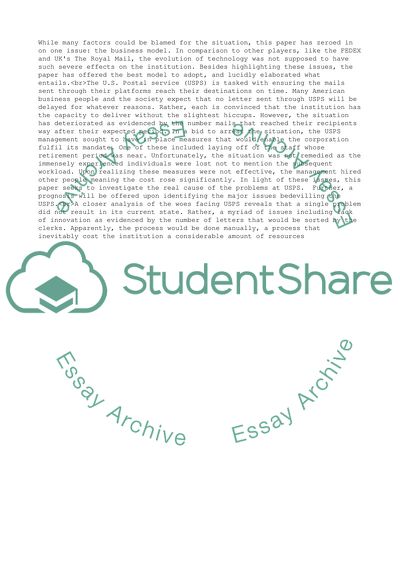Cite this document
(“Report to the Directors of USPS diagnosing the state of affairs and Essay”, n.d.)
Report to the Directors of USPS diagnosing the state of affairs and Essay. Retrieved from https://studentshare.org/management/1682963-report-to-the-directors-of-usps-diagnosing-the-state-of-affairs-and-offering-some-prognosis-on-what-might-be-a-more-sustainable-business-model
Report to the Directors of USPS diagnosing the state of affairs and Essay. Retrieved from https://studentshare.org/management/1682963-report-to-the-directors-of-usps-diagnosing-the-state-of-affairs-and-offering-some-prognosis-on-what-might-be-a-more-sustainable-business-model
(Report to the Directors of USPS Diagnosing the State of Affairs and Essay)
Report to the Directors of USPS Diagnosing the State of Affairs and Essay. https://studentshare.org/management/1682963-report-to-the-directors-of-usps-diagnosing-the-state-of-affairs-and-offering-some-prognosis-on-what-might-be-a-more-sustainable-business-model.
Report to the Directors of USPS Diagnosing the State of Affairs and Essay. https://studentshare.org/management/1682963-report-to-the-directors-of-usps-diagnosing-the-state-of-affairs-and-offering-some-prognosis-on-what-might-be-a-more-sustainable-business-model.
“Report to the Directors of USPS Diagnosing the State of Affairs and Essay”, n.d. https://studentshare.org/management/1682963-report-to-the-directors-of-usps-diagnosing-the-state-of-affairs-and-offering-some-prognosis-on-what-might-be-a-more-sustainable-business-model.


